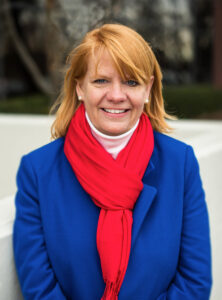Financial Planning for Federal Employees - Jen Meyer goes over the Top 5 things to consider when developing a federal financial plan.
One of the most fulfilling aspects of my career is functioning as a financial teacher. All too many times in my industry there is an attempt to build a mystique as a planner or investment advisor. “You need to work with me because of my unique knowledge.” The reality is that foundational habits and strategies build healthy financial plans and financial lives. Further, good strategy can help you get the most from your federal employee retirement options.
So, allow me to share some cornerstones that I have come to believe are central to a strong “Federal Financial Plan.” As has been my practice I will offer this in a series beginning with a summary (which is this article) and followed by deeper dives (future articles).
Ready? Let’s jump in.
Cohesive Cash Strategy
Jen, for real? The 80s called, no one uses cash anymore.
I’m not talking about coins or paper in your purse or wallet. I’m talking about the liquid portion of your plan. These assets may reside on your checking, savings, deposit vehicles or cash sweep options in your investment accounts. My point is that they cannot be a “deposit and forget” afterthought. Further, these holdings frequently have labels like “car fund,” “vacation account,” or the planning 101 favorite, “emergency fund.”
More about Financial Planning at our no-cost webinar for Feds -
Here we need to embrace the value of planning and strategy to squeeze out additional interest yields while preserving liquidity. Even small-ish increases can add up over time. Plus, properly executed these funds can allow you to be your own lender of first resort. More on this later in the series.
Because we may not use “cash” as much, but folks still want to be paid with “money.” Better strategy leads to bigger balances.
Realistic Risk Management
Real talk. Bad stuff happens. Life and the things within it can and do break. We need to recognize this and prepare. Why? Because accidents, fires, periods of disability and mishaps followed by judgments can derail even the most robust financial plan.
OK, Jen so far, you’re just talking about my piggy bank and not slipping on the ice. Boring!!
That may seem to be the case but stay with me. When we talk about things like sudden profound illness or vehicle liability events, we recognize that every person MAY have this happen but not every person WILL. But if they do there is a financial consequence, sometimes a big one. And, many of these risks follow us for life. So our plan must be a lifetime one and the problem becomes how do we make sure we have the necessary assets to pay for these things SHOULD they happen, FOR LIFE.
In the end we have only a few choices, fully assume the risk (we pay all of it), shift the risk (get someone else to pay), or share the risk (a mix of both). Properly and strategically deploying cash reserves, life and health, and disability insurance and liability protections can not only be wealth protectors but modest wealth accelerants.
Prioritize Pension Practices
If you are a regular reader, you know that I am strongly against the default pension plan of “just show up until MRA.” The lion’s share of my thoughts here will pertain to FERS employees. Not that I don’t love my CSRS folks, but there are more moving parts to a FERS strategy. Remember we want to strategize to get the most from your federal employee pension options.
Here I will focus on the components of buybacks (do them), sick leave strategy (Gasp - use annual leave instead) and getting the 10 percent boost (don’t sell out too early) and how using them in concert makes a difference. Some of these may seem old hat to you and some may be a fresh idea. In my professional opinion, none should be overlooked. Stay tuned.
Total TSP Plan
Once again, I am not a fan of “set it and forget it planning,” especially for TSP. Likewise following the “water cooler” ideas can be a drag on your plan. One of the top questions we field is how to choose the right TSP funds. I would challenge you not to think right and wrong funds but rather how might the respective funds contribute to reaching your retirement and financial goals.
But Jen, isn’t TSP built to be easy?
Like so many things in life that matter, TSP can be simple but not necessarily easy. TSP has matching and vesting rules, loan provisions, Traditional and Roth choices and multiple allocation options. Think of all of these as notes in a piece of music. We want to properly arrange them for harmony and a beautiful outcome. TSP is without doubt one of your most valuable federal government employee benefits.
For example: the lifecycle funds can be a great place to begin at the start of your career. But, I have observed that they tend to be underweight in United States Small Cap company investment. Since this is the highest performing asset class historically you might be missing out. One strategy? Once you hit $50,000 in your balance lay out an allocation drawing from the 5 core funds (C,S,I,F and G). Not as easy but it’s doable.
Bonus Boost (hidden in plain sight)
One of the most misunderstood and underutilized tools in a career Feds toolbox is the Healthcare Savings Account.
Wait what Jen? Like with my health insurance. I thought this was boosting my FINANCIAL PLAN??!!
Trust me and relax. I’m getting there. But you are making my point about something hiding in plain sight.
So, if you have a high deductible health plan you can set up (and hopefully you have) a healthcare HSA. With this account you are able to deposit money from your paycheck on a pretax basis (deductible), it will then grow tax deferred and if you use it for qualified health care expenses you may use it tax free. Yes, it can be both deductible and tax free.
Perhaps you already know this and have been using your HSA. Most likely you are putting money in and taking it out for deductibles and copays from your health plan. That is how most folks use them.
You may not know that you can choose to INVEST the balances (can grow more over time than fixed interest).
You also do not HAVE to withdraw for your deductibles and copays and can let the balance grow and compound over your career.
Whoa Jen. You’re going off the rails. I DON”T use it for my deductibles and copays so I pay ‘em out of POCKETT???!!
Yes.
I’ll go in deeper in my next article but suffice to say you may be able to build up hundreds of thousands of dollars on a pretax basis to potentially use tax free.
That fits my definition of a BOOST.
Well, there you have my summary of 5 things you must have in a federal financial plan. I’ll be back next with a deeper dive on each to help you build your federal financial life.
Until then.
**Written by Jennifer Meyer, CFP®, ChFEBC℠, AIF®,.. The information has been obtained from sources considered reliable but we do not guarantee that the foregoing material is accurate or complete. Any opinions are those of Jennifer Meyer and not necessarily those of RJFS or Raymond James. Any information is not a complete summary or statement of all available data necessary for making an investment decision and does not constitute a recommendation. Investing involves risk and you may incur a profit or loss regardless of strategy suggested. Every investor’s situation is unique and you should consider your investment goals, risk tolerance, and time horizon before making any investment or financial decision. Prior to making an investment decision, please consult with your financial advisor about your individual situation. While we are familiar with the tax provisions of the issues presented herein, as Financial Advisors of RJFS, we are not qualified to render advice on tax or legal matters. You should discuss tax or legal matters with the appropriate professional. **
***The Thrift Savings Plan (TSP) is a retirement savings and investment plan for Federal employees and members of the uniformed services, including the Ready Reserve. The TSP is a defined contribution plan, meaning that the retirement income you receive from your TSP account will depend on how much you (and your agency or service, if you're eligible to receive agency or service contributions) put into your account during your working years and the earnings accumulated over that time. The Federal Retirement Thrift Investment Board (FRTIB) administers the TSP.***




